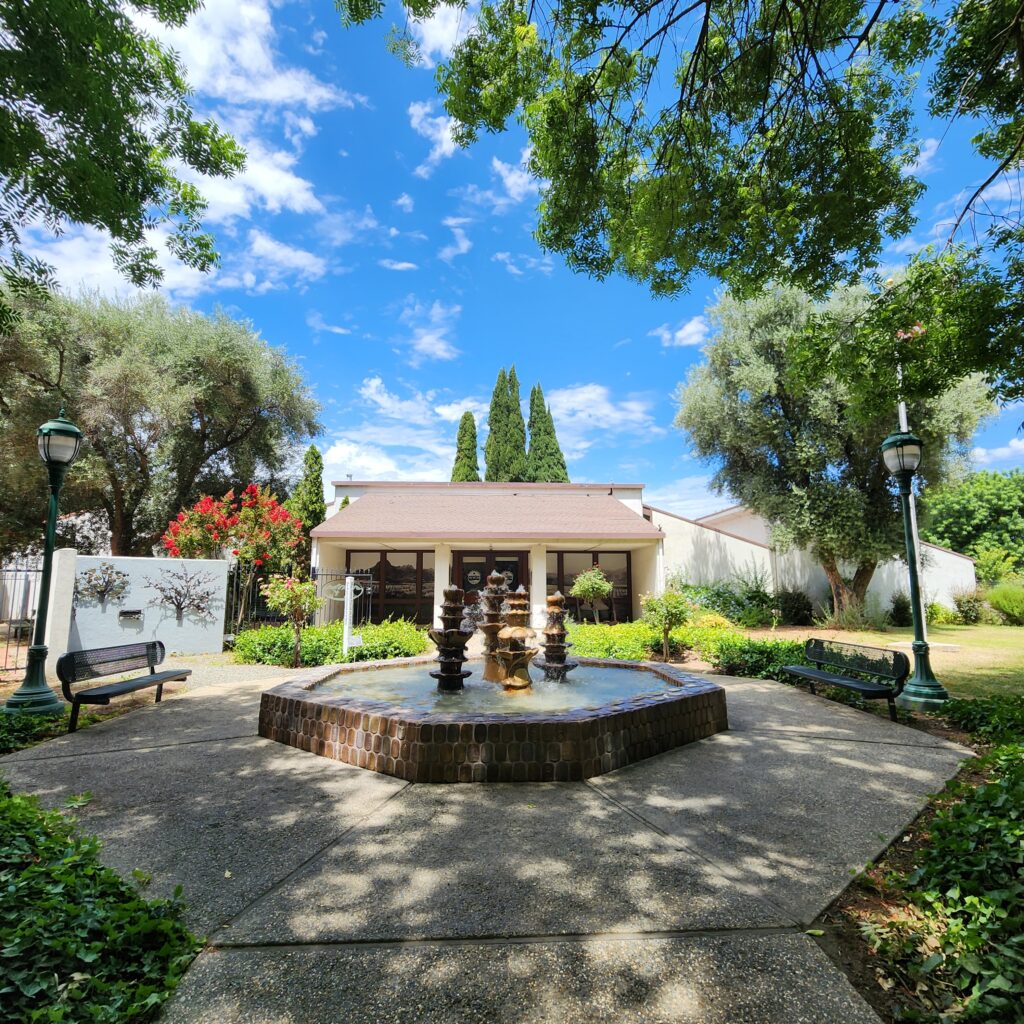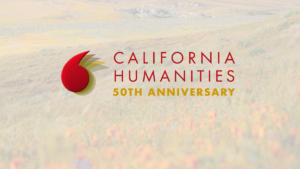In late summer 2024, the Sutter County Museum will launch a new permanent interpretive exhibit about Black history within Yuba and Sutter counties, culminating a multi-year research and planning process. With support from California Humanities through a Humanities for All Project Grant, Yuba-Sutter Black History draws on findings, stories, and artifacts that highlight the long-standing but little-known history of African Americans within the Yuba-Sutter region.
Over the past year and a half, the museum has provided opportunities for Black residents to share their stories and experiences with other community members and will develop more public programs to complement the new exhibit, including lectures, panel discussions, and curriculum guides for educators.
On June 25, California Humanities staff visited the museum for a behind-the-scenes look at the exhibit-in-progress, including a special chat with Humanities Advisor Gwen Ford and gallery and collections tour from Project Director Molly Bloom. Separately, they both shared a few words with us about the journey undertaken to make this exhibit a reality, and the impact they hope to see.
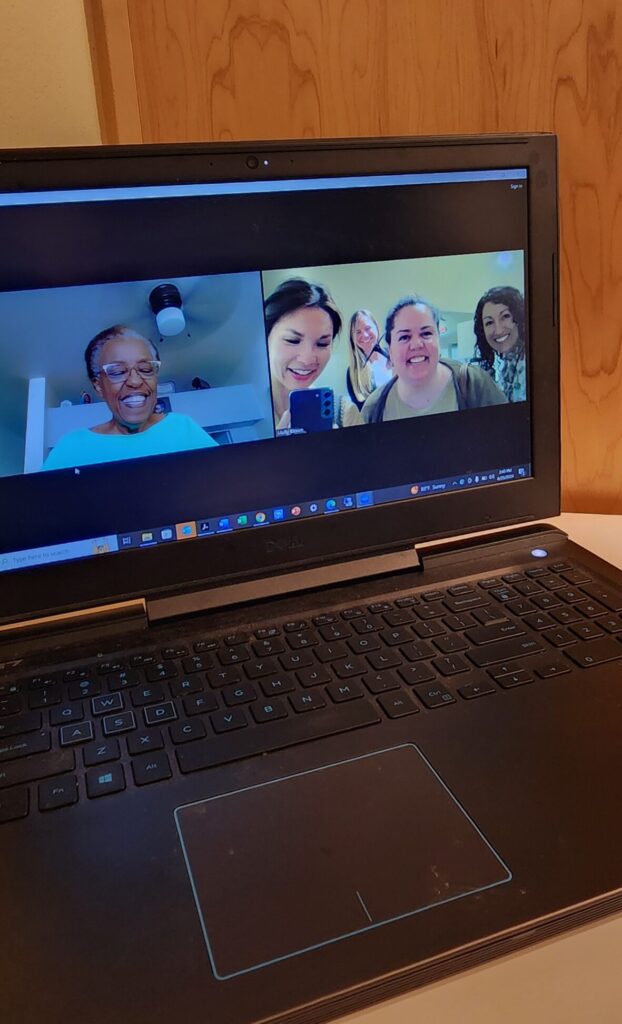
What was the impetus for creating this permanent exhibit? What needs will this meet and how did you determine this?
Molly: The large Multi-Cultural Wing in the Sutter County Museum was built in 2005, and the exhibitions highlight diverse communities with sizable populations in the Yuba-Sutter region. In the early 2000s, Museum staff used census data to determine exhibits and worked with community partners from then through the present to develop, install, and continually update exhibits on Chinese Americans, Hmong Americans, Japanese Americans, Mexican Americans, and Punjabi Americans. A space has been reserved in the gallery since its inception for a permanent exhibition on Black History in the Yuba-Sutter region.
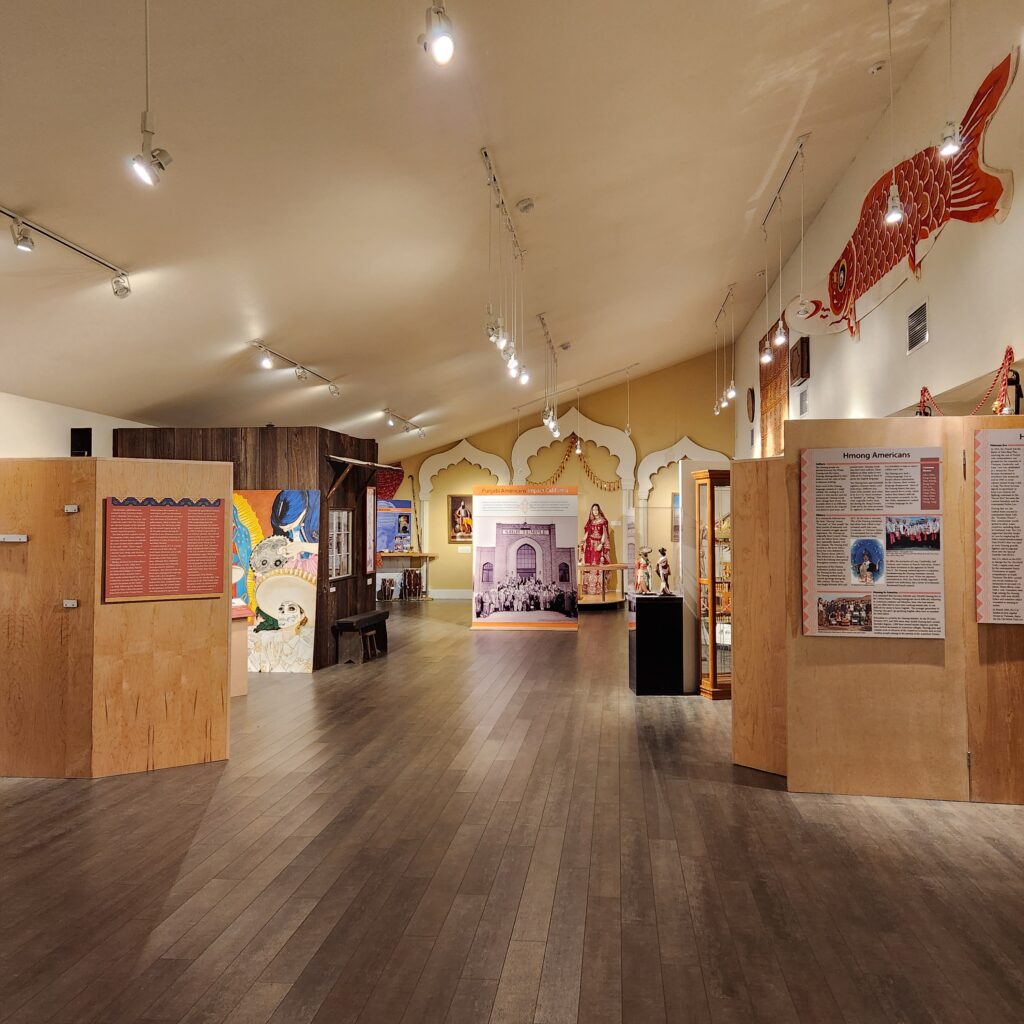
Gwen: The Sutter/Yuba County area is very diverse and has been since the early 1800s. The Sutter County Museum has beautifully recognized and displayed information about the various cultures that make up this area, with the exception of the African American/Black culture. The latter has played a significant role in the building of this community, but very few people living have knowledge of the roles they played in making this area the success that it is.
For example, few people know that many Black-owned businesses in the area supported the local economy, nor do they know that California’s first Black mayor was from this area, and that his journey to success started as a partner with several other Black miners during the Gold Rush. There are many, many stories such as these, as well as more recent stories, that people need to know about.
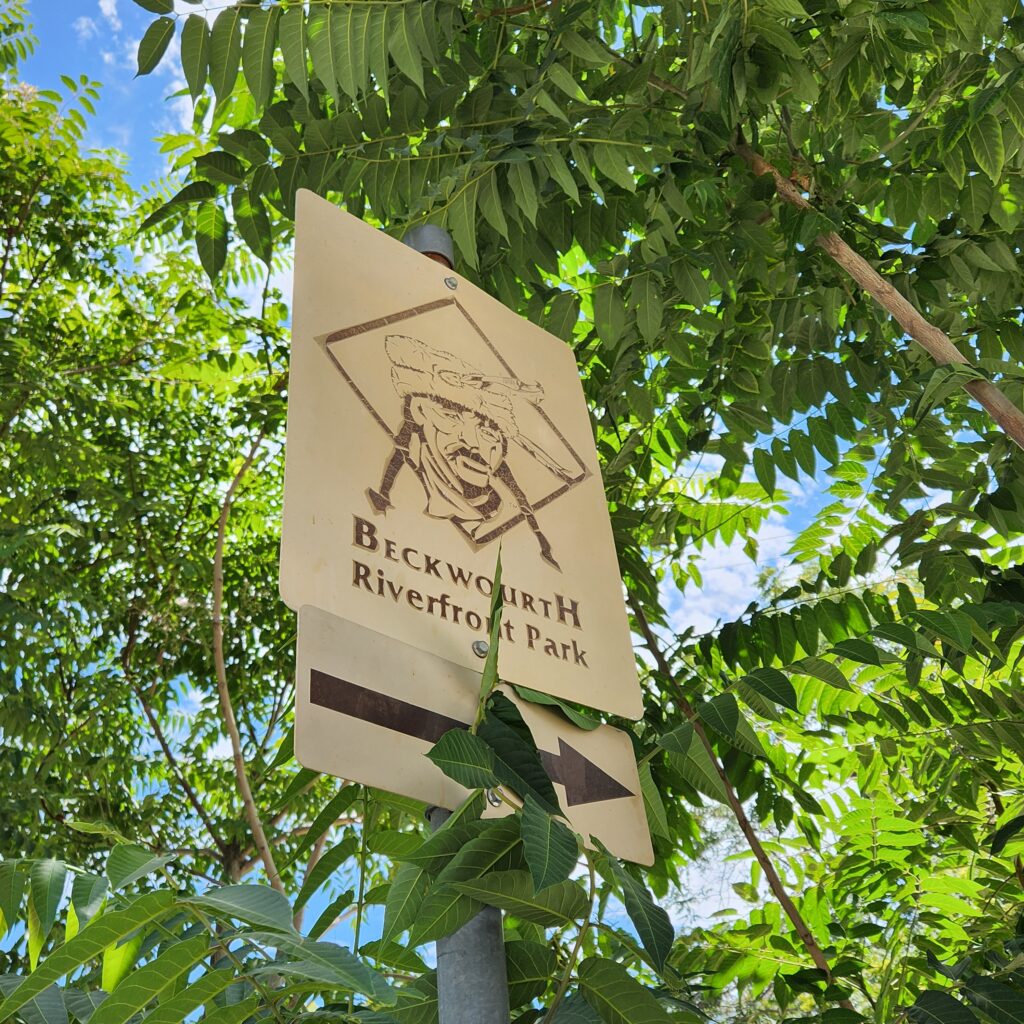
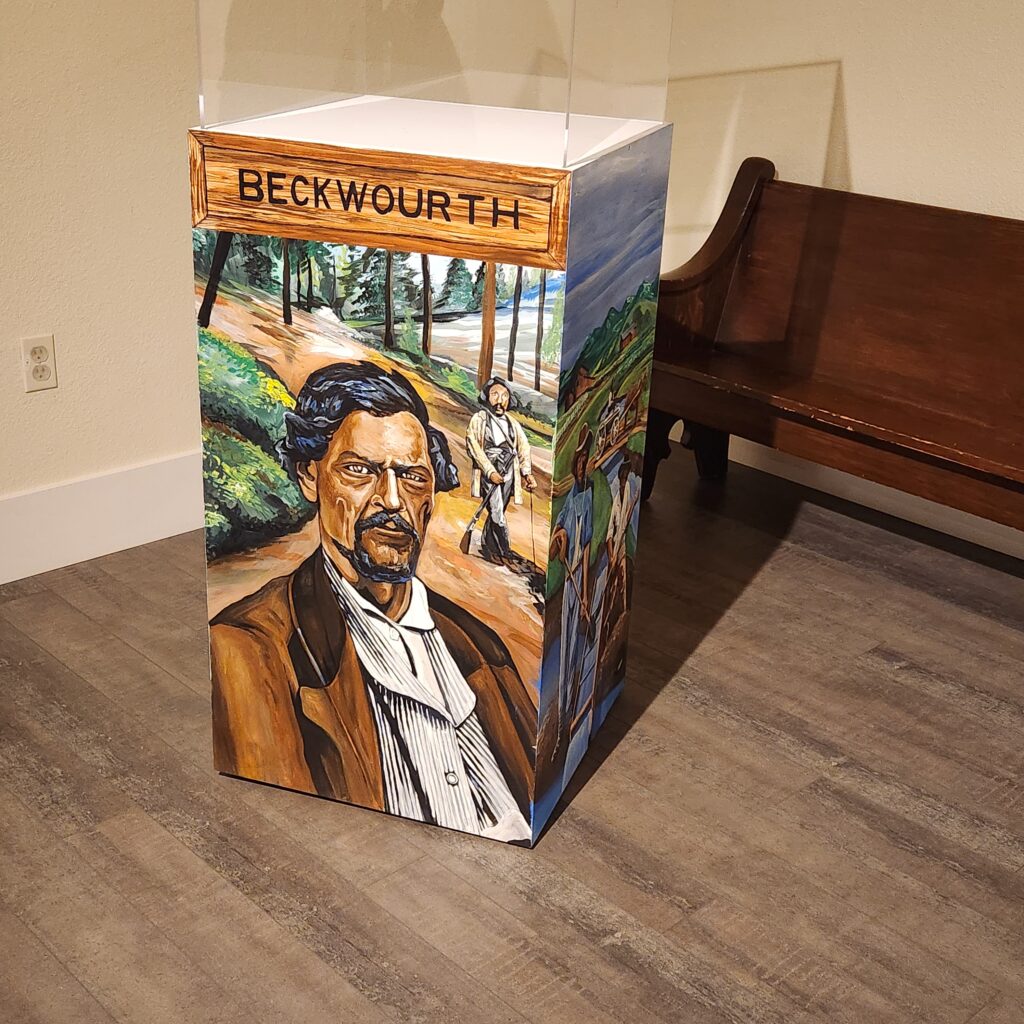
Above: One of the stories in the exhibit concerns James Beckwourth, American mountain man, fur trader, and explorer. While books have been written about him and parades held in his honor, few people know his story as an American pioneer.
Above all, the growing population of Black children in this area want to see themselves in their local history and learn about their ancestors’ local contributions. Like other cultures represented at the Sutter County Museum, it is critical that this piece of the puzzle be added to the Museum collection so everyone can see a more complete and beautiful picture of what we all have built for our growing community.

Tell us a little bit about your research process. For example, how did your research into the first Black settlers in the Yuba-Sutter region inform the content of the exhibit? How did you incorporate more contemporary stories and feedback from the local community?
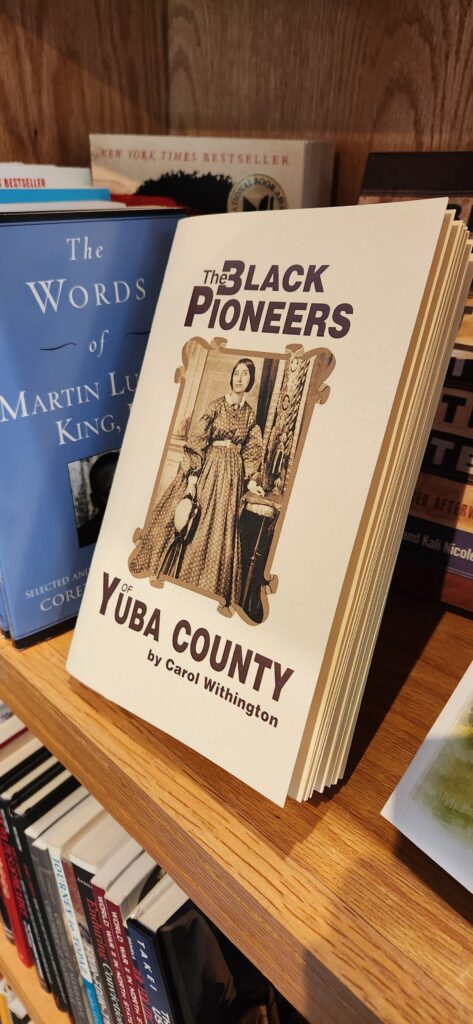
Molly: There were already a few key reference books that we initially utilized in our research, including The African American Heritage of Yuba County 1849-1870 by Lester C. Pogue, The Black Pioneers of Yuba County by Carol Withington, The Negro Trail Blazers of California by Deliah L. Beasley, and Blacks in Gold Rush California by Rudolph M. Lapp that we knew had great information on local individuals.
We hired one high school and two college interns to support the research phase of the project. Our volunteers, staff, and interns compiled hundreds of pages of research, photographs, spreadsheets, and video resources to use. Our Humanities Advisor, Gwen Ford, worked to identify local members of the Black community who were willing to share their ideas, stories, photographs, artifacts, and insight for this project. We held outreach events at the Museum and attended community events to spread the word about the project. This led to many connections, and we conducted oral history interviews, met with individuals to learn about local stories, and saw many new artifacts and photographs donated to the Museum’s collection.
Gwen: As a result of this outreach, the enthusiasm has grown exponentially and is reaching well beyond this area, to people who have had families here who are willing to share information to grow and further enhance our ability to display more information.
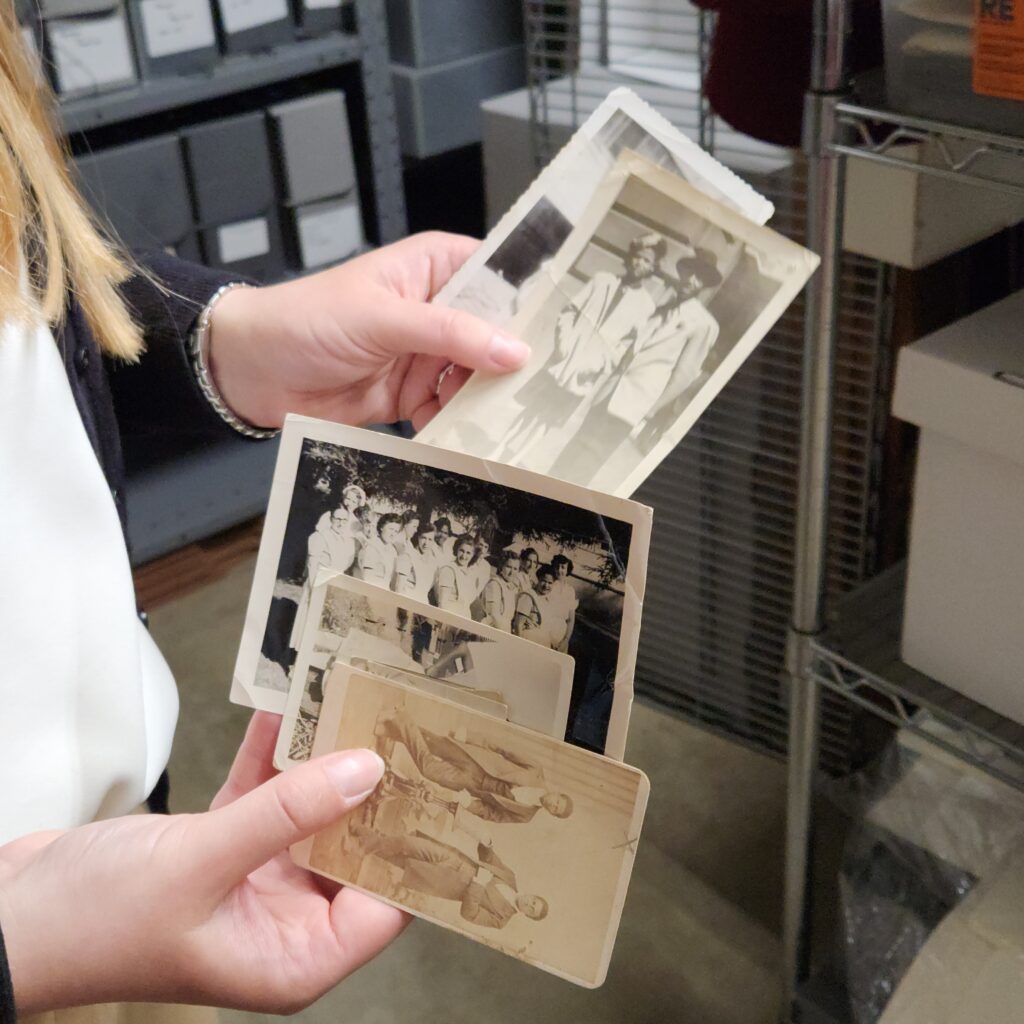
Molly: The exhibit content was heavily informed by the community involvement and the images and objects donated, as well as the invaluable oral history interviews; without these, we would have no objects to display and fewer than ten identified photographs.

We learned through our open house event last year that one aspect that was very important to community members were stories of Tuskegee Airmen with a connection to the region. Many people expressed that they would like to see this information included, and we were able to connect with relatives of decorated Air Force Colonel George Iles. They shared photographs and information for the exhibit.
We also originally had many more Yuba County stories compared to Sutter County stories. Through outreach efforts, our Assistant Curator connected with the granddaughter of local Black business owner Isaac Crawford, and she shared photos and information about his shoeshine and repair store that opened in the 1950s in the heart of Yuba City’s business district.
What is one of the interesting things that not only the exhibit team, but perhaps you personally, learned when curating this exhibit?
Gwen: Although I’ve lived here for a long time, I’ve been amazed how we’ve uncovered so many hidden and untold stories about the Black community. For example, this area had the first Black mayor in the state of California who had made his wealth in during the Gold Rush and had become a well-known businessman and leader in Marysville before he became mayor in Wheatland.
Molly: One of the takeaways that I personally learned through this process was that we want to build our exhibit with maximum flexibility. We know that there are more stories, photographs, and artifacts out there. We therefore designed the exhibit to incorporate the physical objects and photographs that will be showcased today, but with options to add new objects and stories as they come to light. Often, people think that as a history museum, we only are interested in very old objects. But a lot of the key content and objects in the Sutter County Museum are from the 20th or even 21st century! We hope that people will see that even more recent history is history, and the exhibit will be a starting point to build upon in the future, just as with the other permanent exhibits within the Museum.

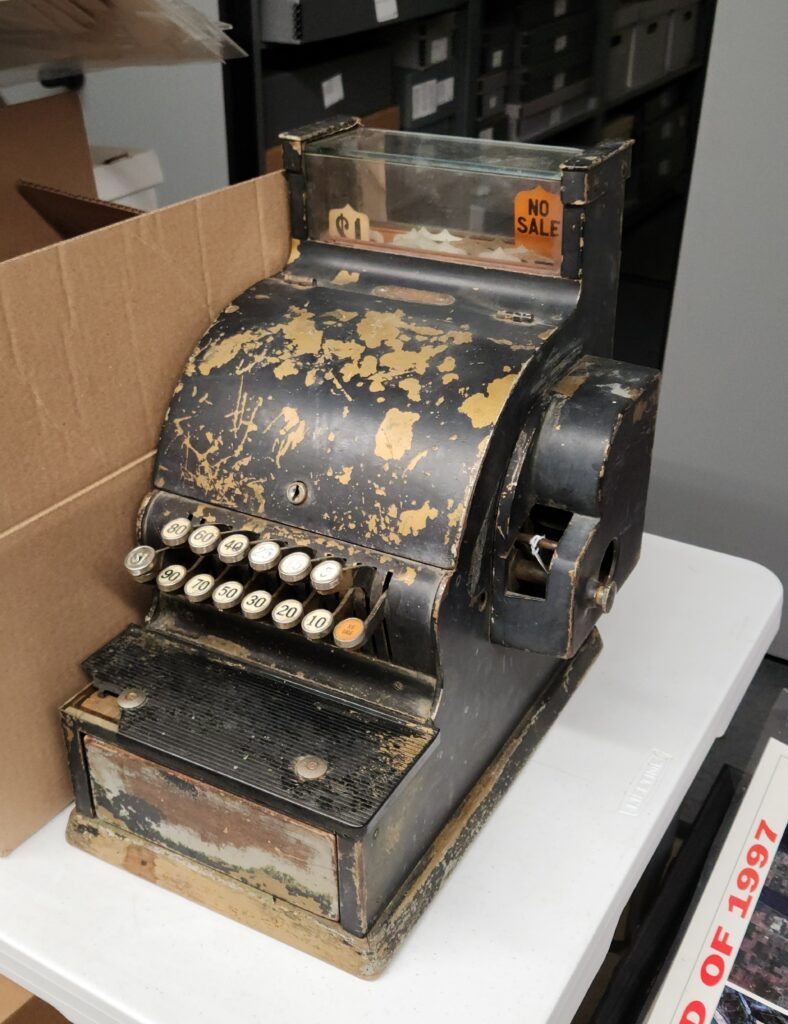

What do you hope visitors will take away from visiting and experiencing Yuba-Sutter Black History?
Gwen: I hope people will learn about a significant part of our community that played a major role in making our area a success. By knowing this story, our children will gain knowledge and understanding about another successful part of our culture that will inspire them and expand their knowledge.
Molly: Gwen said it really beautifully to me once, and I’ll paraphrase her words—we hope that people will see how the Black community not only is a part of this community today, but how they have always been a part of this community, helping to build the future from everything that took place in the past. Our mission at the Museum is to share local stories to strengthen community bonds, to inspire celebration of our diverse cultural heritage, and to demonstrate how understanding the past prepares us for our future. These are local stories that came from the community and will be shared with the community.
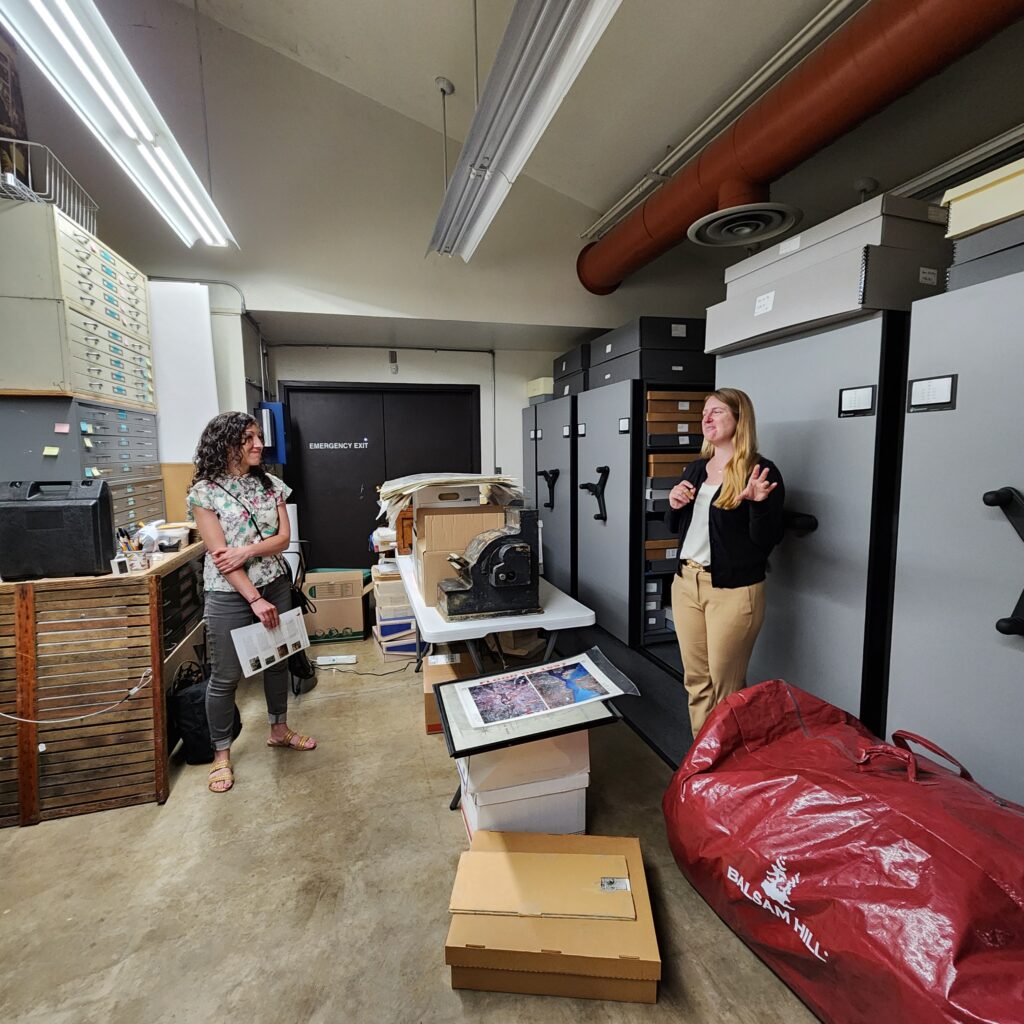
Can you preview some of the public programming that visitors can expect throughout 2024?
Molly: We look forward to hosting many programs throughout 2024! These include an opening reception to celebrate the new Black History of Yuba-Sutter exhibit; one of our popular kids’ movie night events with a movie on themes related to Black history in the US; a panel discussion with individuals who worked on the exhibition; a workshop on African American family history resources in partnership with our local FamilySearch Center; and an educational Speaker Series lecture with a member of the local Black community, which will further build on the exhibit’s themes.
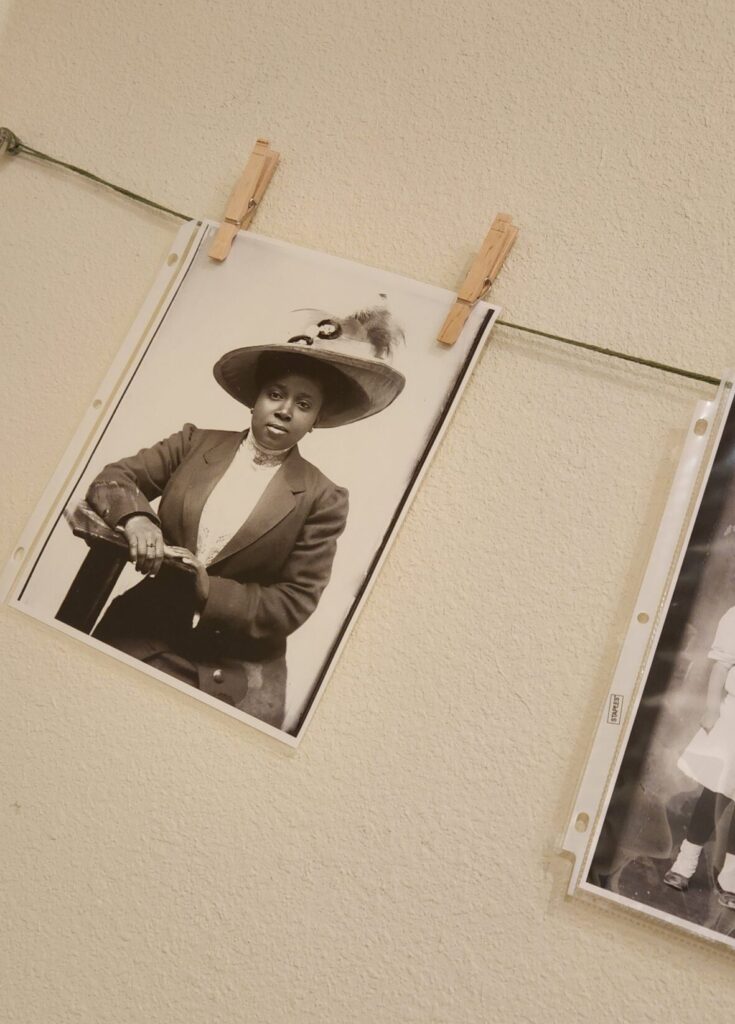
As part of the Yuba Sutter Black History project, The Sutter County Museum is crowdsourcing information on photographs from the Museum’s collection. Read more and view more photos that you can help identify in their spring 2024 Bulletin (p. 14).
The Sutter County Museum is planning several free public humanities programs ahead of the exhibit opening, with a panel planned in late July 2024 taking a behind-the-scenes look at how the exhibit was developed. Visit suttercountymuseum.org/events for more information and subscribe to their eNewsletter for the latest updates.
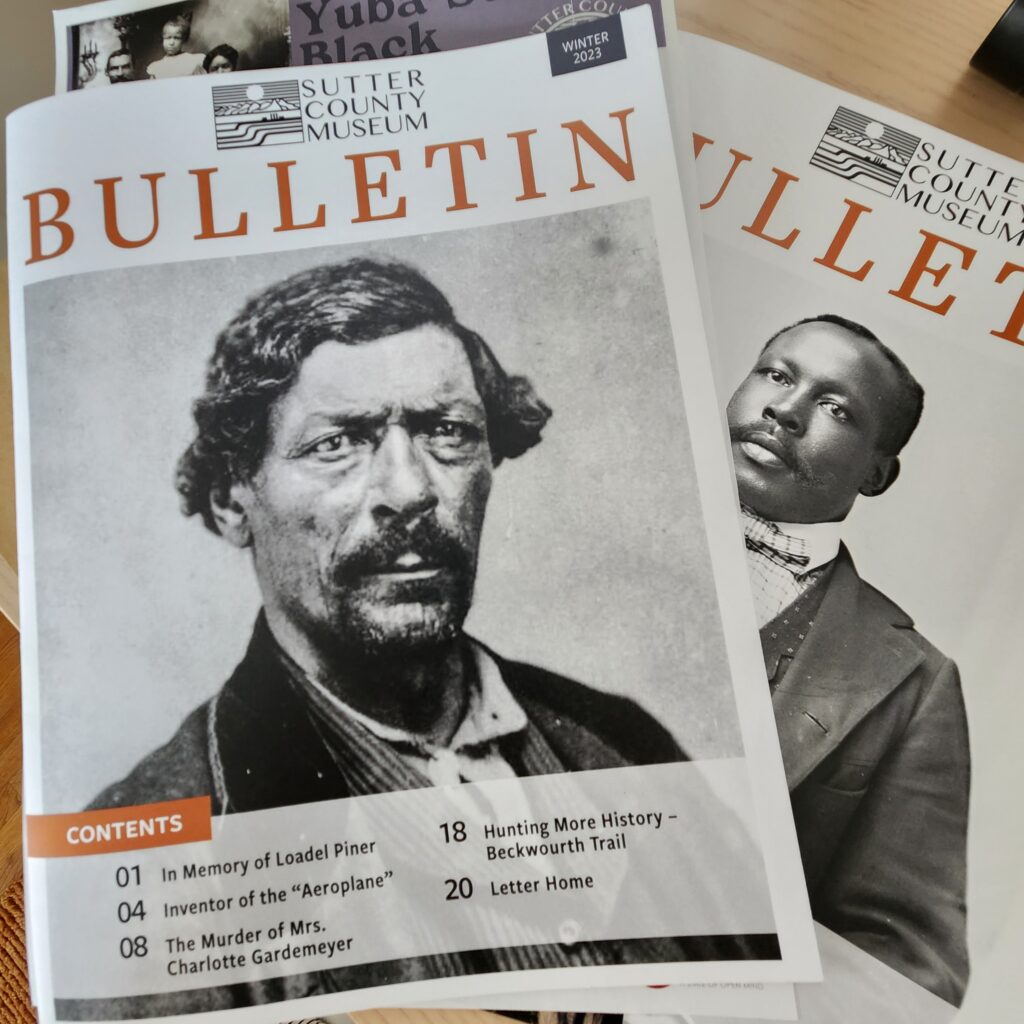
Available in print and online, the Bulletin is wonderful resource on county history published by the Museum’s Community Memorial Museum Association. The past several issues contain supplemental material related to the development of the Yuba Sutter Black History exhibit. View the spring 2024 and winter 2023 issues here and here.
About the project team:
Gwen Ford is a leader in the community who brings decades of experience to her current management of the Connecting Cultures Collaborative, a community organization of agencies coming together to enhance the cultural richness of the Yuba-Sutter community. Gwen is a graduate of Augusta State University in Augusta, GA, and her 40-year career has spanned many industries, both public and private. She brings to this project her expertise in operations management, project/program management, accounting, human resources, employee relations, training and education, public speaking, and more.
Molly Bloom joined the Sutter County Museum as the Director and Curator in 2021, managing operations, exhibits, public programs, and more. She has spent the past ten years at art museums, natural history museums, a children’s science museum, and historic sites. Molly is originally from Massachusetts and studied archaeology and Latin with a minor in art history at Oberlin College before graduating from Yale University with an MA in archaeological studies.

